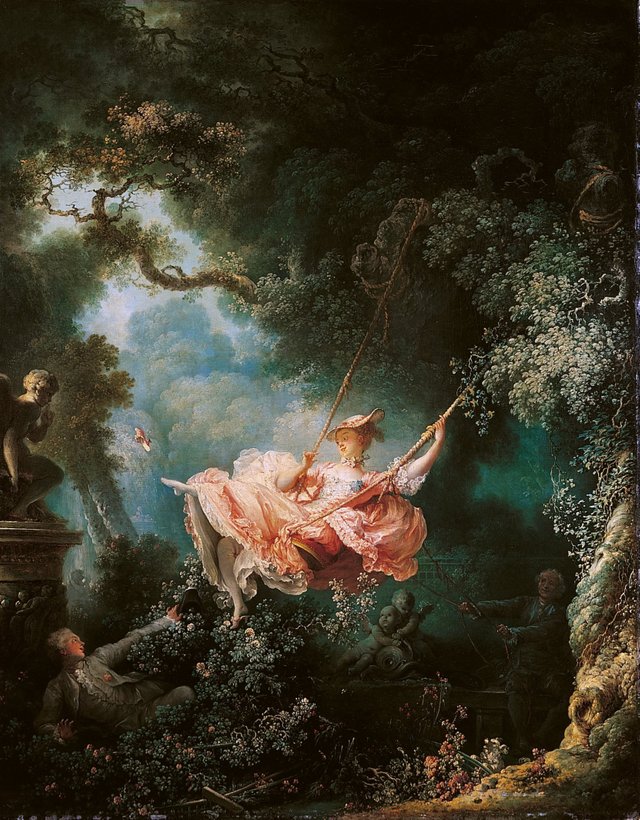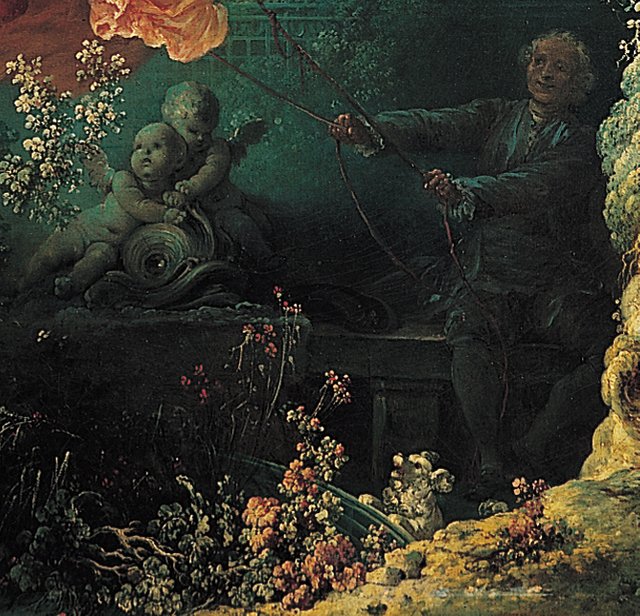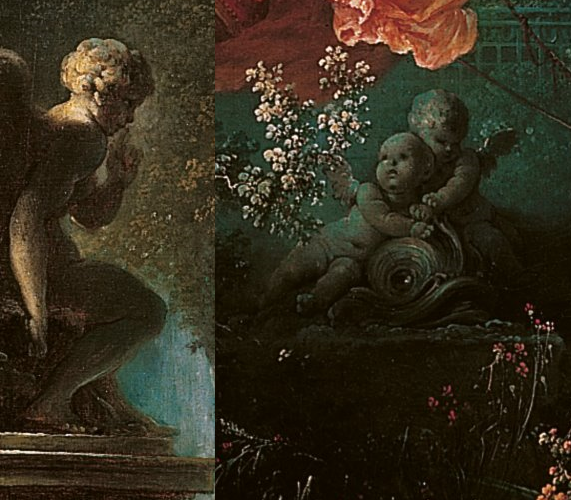[ART] An 18th Century Triangle Drama 🎨
Today, it's hard to believe that this painting caused sighs and red cheeks in the 1700s. This is probably partly because we've lost the ability to read and interpret the language of pictures. Fragonard's painting The Swing (L'Escarpolette) is one of the most famous works of the French rococo era. It was painted in 1768 during the age of enlightenment in France, a time when the bourgeoisie grew and a time that would end violently with the French Revolution. This also characterized the art; briefly and simplified you can say that they went from religious motives and regent portraits to portray everyday motives that the new and growing class recognized.

Jean-Honoré Fragonard (1732-1806) was an apprentice of François Boucher (1703-1709), which is quite evident in his art. The Swing (like most others) was a commissioned piece. The man who ordered it was Baron de St Julien who wanted to have a portrait of his mistress in a swing being pushed by a bishop. A lot of artists had refused to paint the motif before Fragonard was commissioned, since they thought it would be a bit too sacrilegious. Fragonard also refused and instead placed the husband of the woman behind the swing. The man in the more privileged position who's taking a peek up her dress is Baron de St Julien himself.
The painting is composed in a triangular shape with the baron and the husband as the base and the woman forming the top of the triangle. The greenery around them is almost shaped like an oval frame with darker colors the further out the edges you come. The pastel colors creates a frivolous and light-hearted atmosphere, and the soft and fluid brushstrokes make sure there are no sharp edges.

Most of us have certainly swung with such exceptional speed that our sandals fly through the air. This without causing sighs or being accused of obscenity. Back then it was a symbol for lost virginity. The billowing dress of the woman has created an opening for the baron, and for us, to lustfully gaze into.
Equally obscene is the gesture of the baron extending his arm and hat towards the genitals of the woman. The hat was often used in purely erotic images to hide genitals in the 18th century.
The blissful baron, gasping with anticipation, lies passively stretched out behind a bush in the fertile foliage. Sitting in the background to the right, the husband faithfully pushes his wife. From his perspective, he can't see the baron, but only his wife's merry ride on the swing. He has been painted in shadow as to show that he's unaware of the affair that unfolds in front of not only his but also our eyes.

The painting is also populated by three voyeurs watching the triangle drama; two putti figures below the woman and Cupid himself putting his finger to his lips as a representation of the secrecy in the scene. The putto nearest the woman regards the spectacle with big eyes as if in dismay. The other putto looks away, as if attempting to protect himself from the immoralities.
 @SteemSwede
@SteemSwede
Sources:
Eva-Gesine Baur (2007). Rococo.
Jean-Pierre Cuzin (1988). Jean-Honore Fragonard: Life and Work.
Kay Stevenson & Clive Hart (2008) Heaven and the Flesh: Imagery of Desire from the Renaissance to the Rococo.
love it! and your story too!